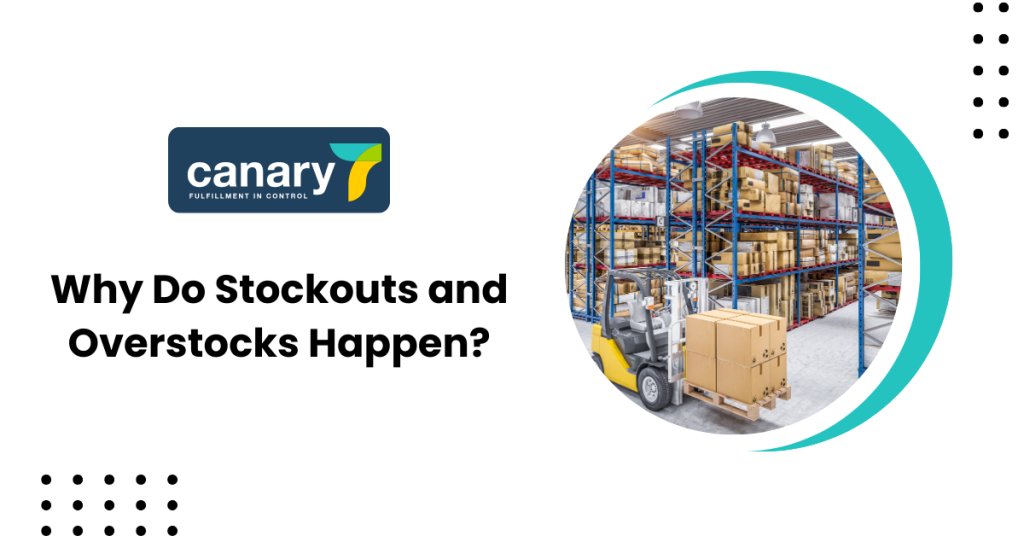In the fast-paced world of e-commerce, small businesses face a myriad of challenges, particularly when it comes to managing their inventory. For small businesses, achieving the right inventory level to meet customer requirements and prevent inactive capital investments requires specific attention. The proper implementation of an Inventory Management System serves as a fundamental solution for finding inventory equilibrium. Small businesses can achieve successful operations and please customers by utilizing modern technologies for inventory optimization.
As the saying goes, “Success is where preparation and opportunity meet.” The implementation of advanced inventory management systems enables organizations to obtain instant data insights along with control capabilities for preparation purposes. So, let’s explore the complexities of small businesses to prevent stockouts and overstock. Also, we will discover the importance of an inventory management system in this scenario!
Why Do Stockouts and Overstocks Happen?
Understanding the root causes of stockouts and overstocks is essential for small businesses aiming to optimize their inventory management. Here are some common reasons:

- Inaccurate Demand Forecasting: Many small businesses frequently face problems when trying to forecast their customer demand correctly. Businesses encounter problems with surplus stock and insufficient inventory because of seasonal trends and market fluctuations, together with unexpected events.
- Inefficient Inventory Tracking: Without a reliable system for real-time inventory tracking, businesses may lose sight of their stock levels, leading to unintentional stockouts or overstocks.
- Supplier Delays: Businesses that depend on suppliers face the risk of encountering multiple challenges. When suppliers deliver products late, it generates stockout situations, while excessive dependence on particular suppliers produces unnecessary inventory when customer demand suddenly decreases.
- Lack of Automation: The absence of automation causes manual inventory management to become prone to human mistakes. Miscalculations that occur automatically can create either excess stock or complete depletion of stock.
- Poor Warehouse Management: The way a warehouse operates determines how challenging inventory management becomes. An improper product arrangement in distribution results in both product search complications and delayed deliveries and stockout events.
How Can an Inventory Management System Fix This?
An effective Inventory Management System addresses these challenges head-on. Here’s how:
- Real-Time Inventory Tracking: Through real-time inventory tracking, businesses acquire the ability to check their stock levels continuously. The system enables speedy reorder requests that reduce stockouts.
- Automated Reordering: The system enables automated reordering through its features, which create new orders when stock thresholds decrease past determined levels. Businesses can operate with ideal inventory amounts automatically through this system without requiring human contacts.

- Data-Driven Insights: The analytics features alongside reporting tools in advanced inventory management systems enable business operators to recognize sales patterns and analyze customer interactions. Businesses can use collected data to create better predictions concerning demands and inventory control strategies.
- Integration with E-commerce Platforms: A solid e-commerce inventory solution achieves seamless time-based updates of inventory levels across all sales channels. The protection of stock movements and shortages becomes possible through this method.
- Supplier Management: Some systems let businesses manage supplier relationships through features that let them observe supplier performance and timetable data. The system enables organizations to reduce potential risks stemming from supplier delivery delays.
- Cloud-Based Solutions: Businesses that use cloud-based inventory management systems gain remote access to their data, which stimulates better decision-making capability alongside market modification preparedness.
What Are the Biggest Benefits for Small Businesses?
Investing in an 3PL inventory management system offers numerous advantages for small businesses:
- Cost Savings: Cost-efficient operations become possible when businesses avoid emergency shipments, and costs are reduced from markdowns and product losses from running out of stock.
- Improved Customer Satisfaction: Better customer satisfaction emerges when products become available at the time customers desire to buy.
- Enhanced Efficiency: Automated processes shorten time requirements for manual inventory duties, enabling workers to switch focus from operational tasks to strategic activities.

- Better Decision-Making: Live data analytics gives organizations the ability to make their inventory decisions and sales and purchasing strategies based on reliable information.
- Scalability: A properly operating inventory management system helps businesses scale operations by providing environmental scaling features for growth.
Is It Worth Investing in One?
For small businesses, the question is not whether to invest in an Inventory Management System but rather which system to choose.

The advantages exceed investment expenses because better sales, along with satisfied customers, are substantial potential outcomes.
1. Cost-Effective Solutions: Many inventory management systems solutions are designed specifically for small businesses, offering affordable pricing and scalable features.
2. Trial Periods: Businesses can test the system during trial periods, which multiple providers extend as part of their service.
3. Long-Term ROI: A small business should select inventory management because it delivers substantial, long-lasting returns on investment.
Bottom Line:
The success of small businesses in managing inventory requires an effective system which prevents stockouts alongside overstocks. A business achieves cost reductions along with satisfied customers through real-time inventory tracking combined with automated systems and data-driven analytical approaches. A growing e-commerce industry requires businesses to choose sturdy cloud-based order management systems. This system enables businesses to execute inventory functions more efficiently while granting them the power to react promptly to changes in the market.
Creating a 3PL inventory management system provides enhanced distribution services, which allow companies to concentrate on growth initiatives through efficient inventory management. Meanwhile, the supply chain warehouse management software especially by Canary7 gives organizations transparent inventory visibility across all locations so that they can make better plans.
Ultimately, the right ecommerce warehouse management system can help small businesses thrive in a competitive market. So, let’s make your business grow together. Contact Canary7’s website or check out our website for more!

Colleen Ballantine
Author
UPDATED ON: 6th Feb 2025
Colleen is a marketing specialist at Canary7, writing in-depth blog content on warehouse management, inventory control, and logistics. With extensive industry experience, Colleen focuses on delivering informative and insightful posts
Subscribe to get latest posts straight in your inbox.